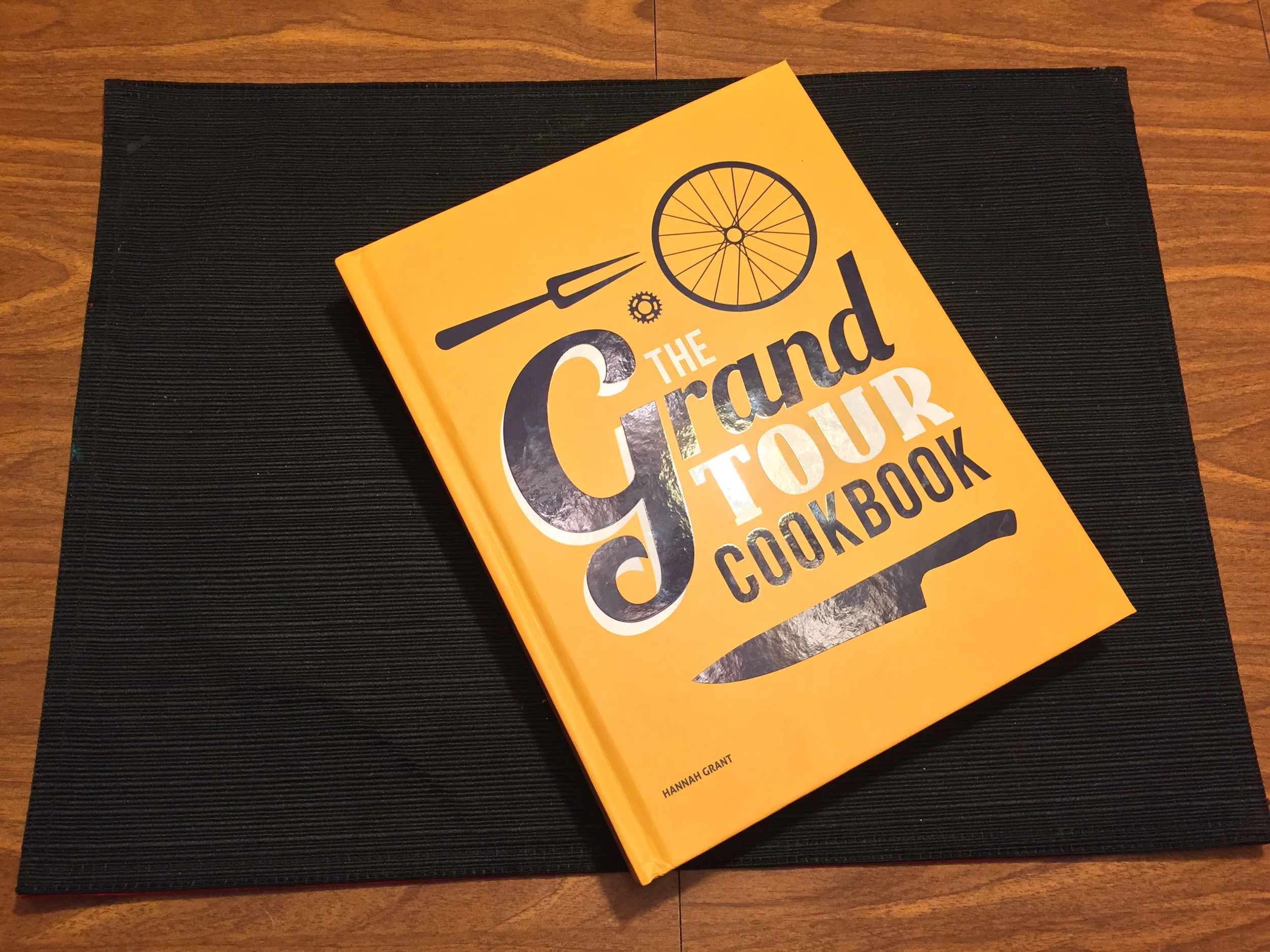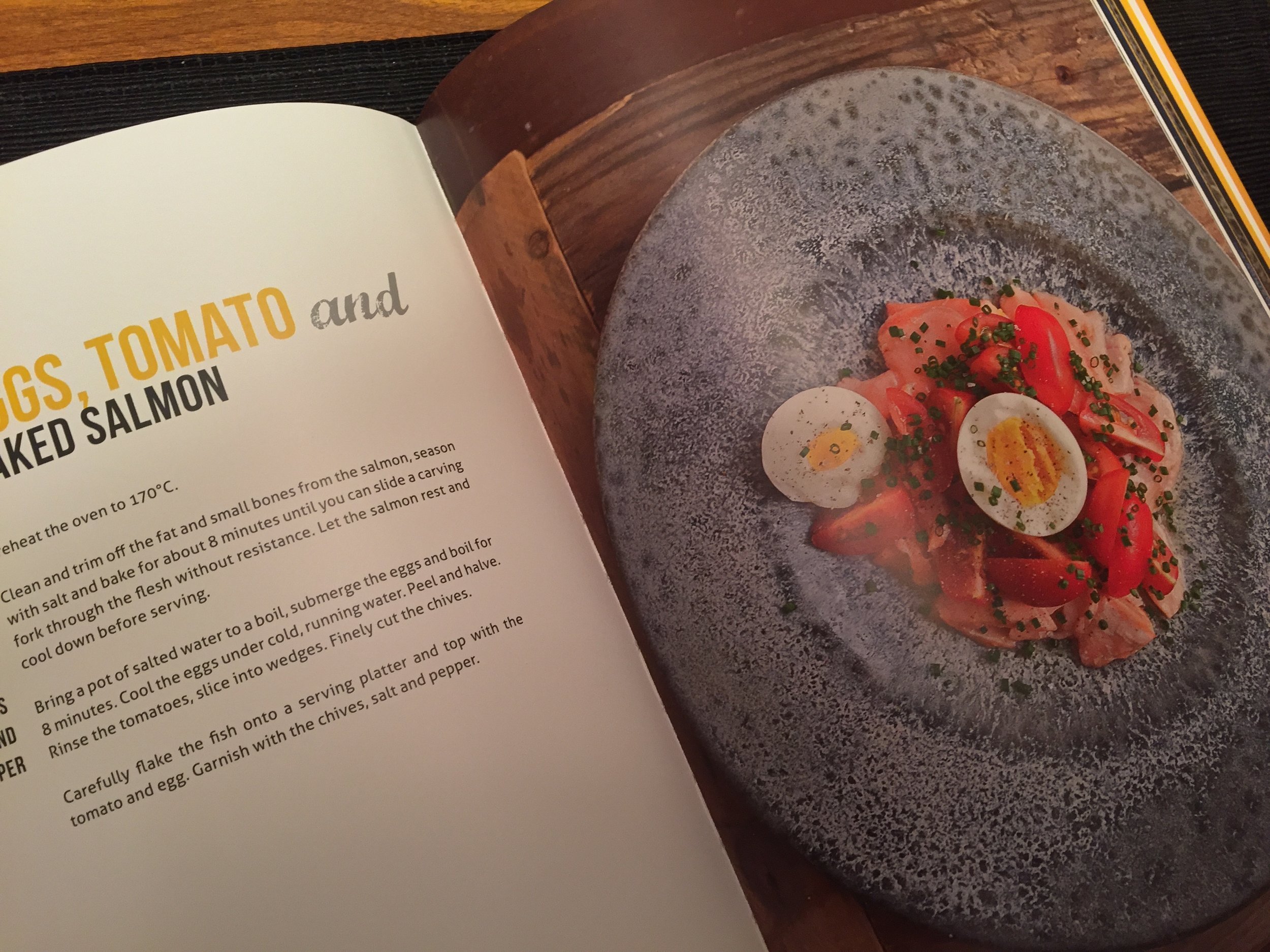Review: The Grand Tour Cookbook (Musette Publishing)
““Diet is one of the basics of performance.””
(2017) With the holiday season dropping off of the back like a rider (we'll call him me) bonking, we were excited for an item that was on our 2016 Holiday List that showed up. Perhaps it was Santa 'Cross who delivered it, but Hannah Grant’s The Grand Tour Cookbook, translated from Danish into English, found its way to the creakybottombracket.com office. It’s loaded with remarkable recipes structured by unique ingredients. For the American audience, there is a warning that comes with it.
This book is heavy. It’s heavy in stature as well as heavy in content. Between the hardcovers are 350 pages of information focusing on cyclists’ diet and morale. Further reading reveals a strangely unique approach by The Grand Tour Cookbook. The book’s target audience appears to be riders taking part in one of the three Grand Tours. Talk about making the target audience spotlight into a laser pointer.
The book is broken down into the twenty-one stages plus two rest days. Ms. Hannah Grant lays out what a cyclist should eat for recovery after each stage of a Grand Tour. Expect at least four dishes per day, often including a desert of types. After the theoretical tour has concluded in the book, Ms. Grant has taken the liberty of adding breakfast ideas, sauce recipes, and bread recipes. With thirteen riders interviewed for the book, there’s always something to occupy the mind while trying not to watch water boil. To round out the content, there’s a piece on the day in the life of a food truck, a personal message from Ms. Grant, and a foreword from Bjarne Riis. One certainly gets his money’s worth with this book.
I’ve argued that making a regional cookbook is exceptionally difficult. That is, some cookbooks thrive in certain growing regions in certain countries. For those in the United States, there will be trips to the grocery store for certain ingredients that may not be in season. In this part of Pennsylvania, we are tantilizingly close to another vegetation zone in the state of Delaware. A simple car ride in the summer would demonstrate just how fickle crops are when corn is knee high in Pennsylvania July but nearly ready for harvest just one hundred miles to the south in the state of Delaware. Since the book was published in Denmark, it’s a certainty American chefs will have to head to the nearest specialty store for a few ingredients. Believe us, though, it’s worth it.
Many of the recipes can be made with minor speciality purchases. Some ingredients often use include anise stars and celeriac.
What Ms. Grant makes clear in her introduction is that her recipes do not include unrefined food. She does not use white sugar, boxed pasta, ready-made breads, or desserts. In our opinion she unsuccessfully asks us to remove Nutella from the pantry. Just as we got offended, we flipped to her personal recipe for chocolate hazelnut spread and felt inspired. (Maybe we’ll slide the jar to the back for now.) Her recipes are typically gluten free and in most cases dairy free. She labels any recipe containing nuts or nut oils. Ms. Grant argues that food needs to be as clean as possible for anyone riding a Grand Tour.
But are the recipes good? The dishes we have tried have come back convincingly finished. Currently our favorite is the quinoa, broccoli, apple, and pomegranate dish that is so simple to make and has ingredients most cyclists have in the kitchen. Remember the tidbit about having no white sugar in any recipe? The Missus stated the dish tasted like candy. Some of the other recipes being eyed up involve celeriac. Recently out of season in this area of the States, the celery root is an underrated food embraced by Ms. Grant. Perhaps we may not wait until they come back in season. Her day four carrot cake, though, will have to be sampled directly.
““The future of cycling as a sport has to do with the right diet.””
Some warnings to the American audience come in the form of measurements. Specifically one recipe states that chicken should be cooked to the internal temperature of 65 degrees. Just in case someone hasn’t made the connection, Ms. Grant means Celsius. It is not labeled in the book for the Imperial crowd. There is a conversion chart in front for us who use the Imperial units of measurement, though Google was usually just left up for reference. Some other areas that left us scratching our heads were cooking times and just how many servings each meal yielded (a recent discovery in the Recipe Index indicated every meal serves four unless otherwise noted).
We’re very excited to add this book to our growing collection of athletic focused cookbooks. We’re also happy to see some of the chefs getting in on some of the profits of cycling. Perhaps we could set aside twenty-one days and make every recipe in the book? This is a great idea, because any day now, the American-based BMC Racing Team will return any number of our soliciting phone calls asking to be the dark horse on their Spring Classics roster. Hopefully they’ll call right when Ms. Grant’s The Grand Tour Cookbook has us firing on all cobblestones.
The Grand Tour Cookbook can be found on Hannah Grant's website and is currently selling for £30.00
An earlier version of this article stated the confusion to the amount of servings. It has since been updated to reflect the statistic that each meal serves four.





